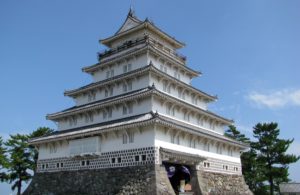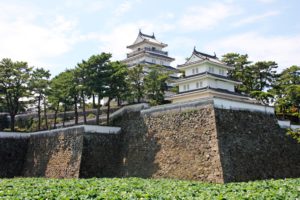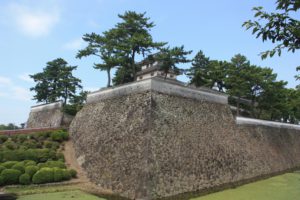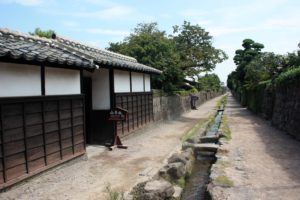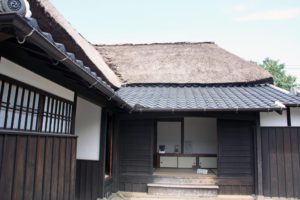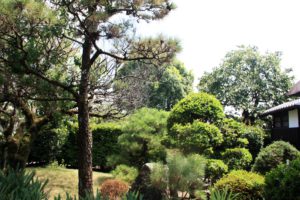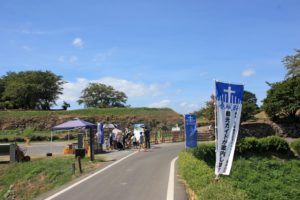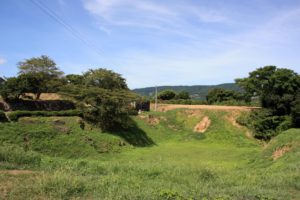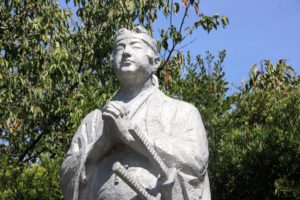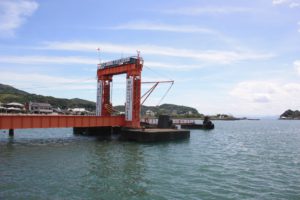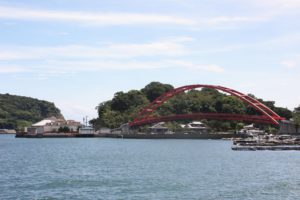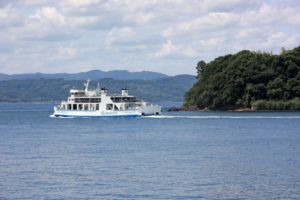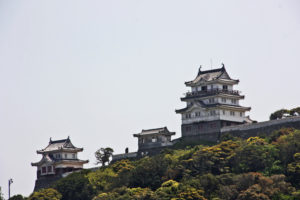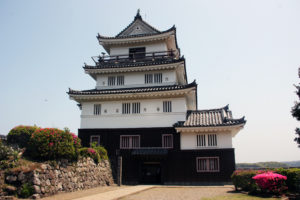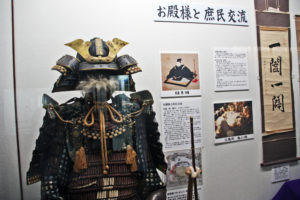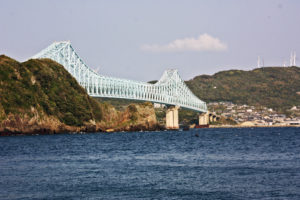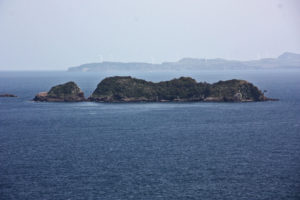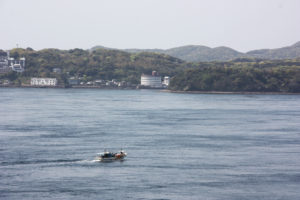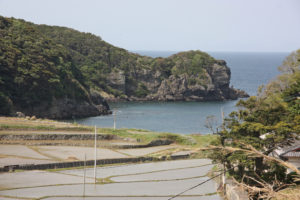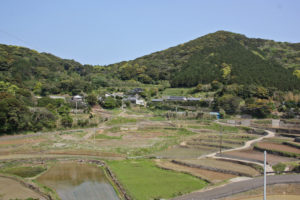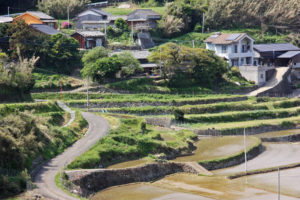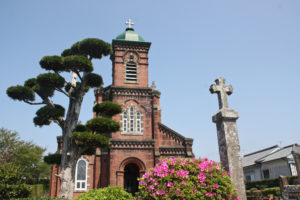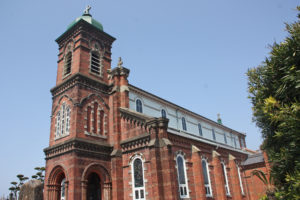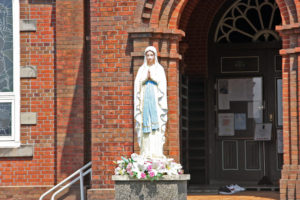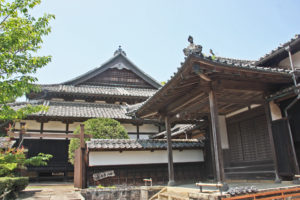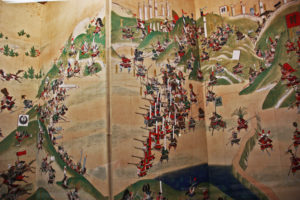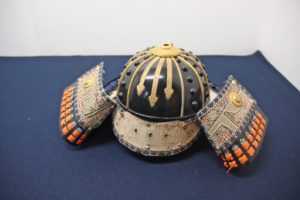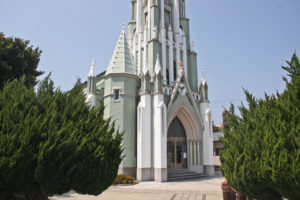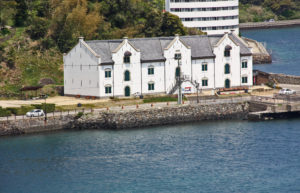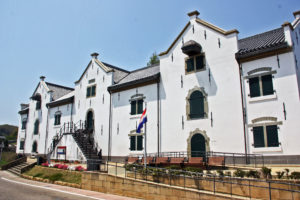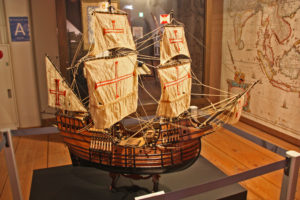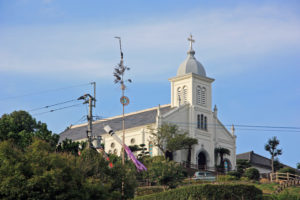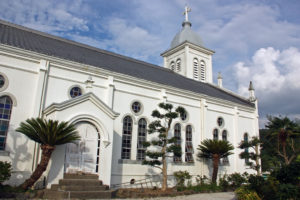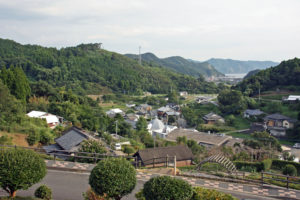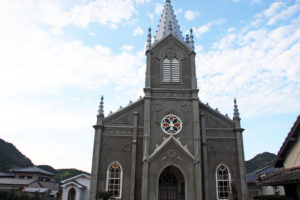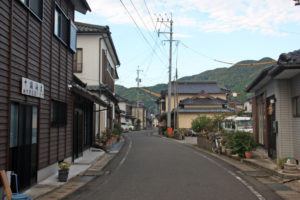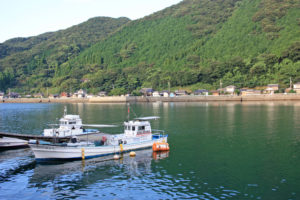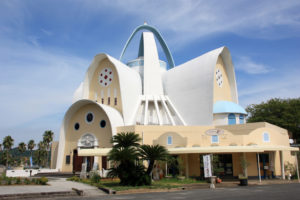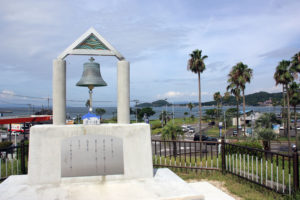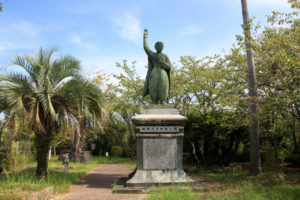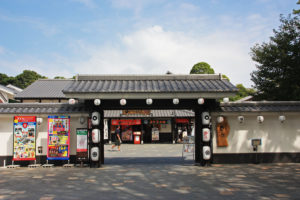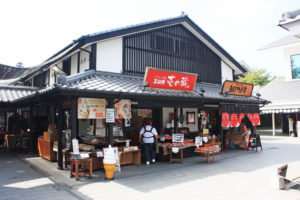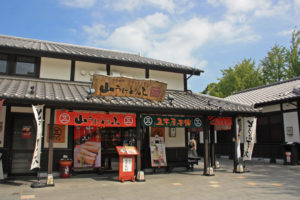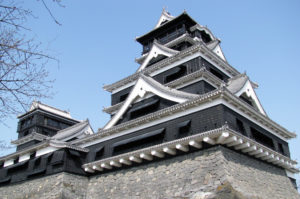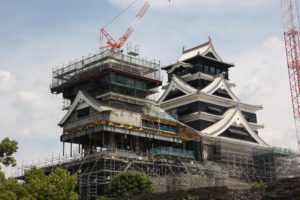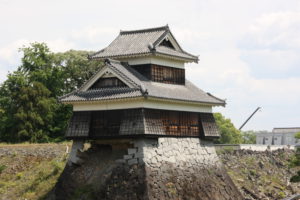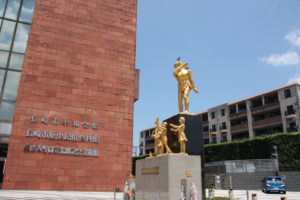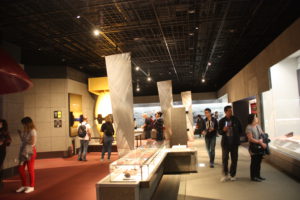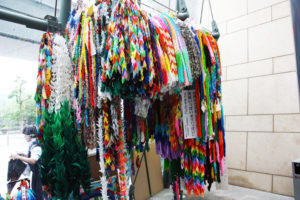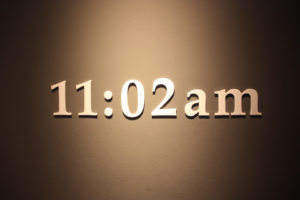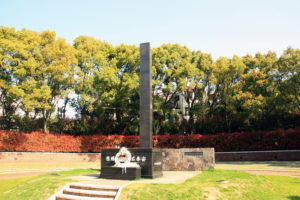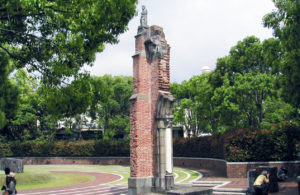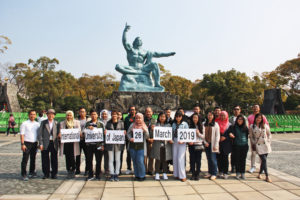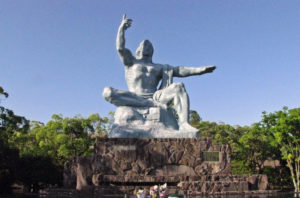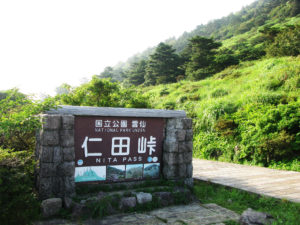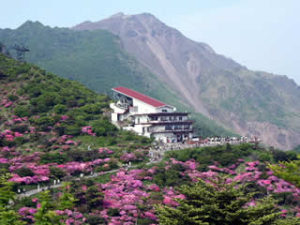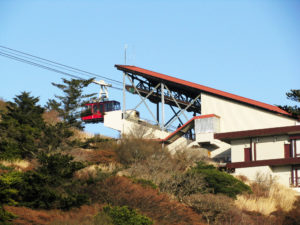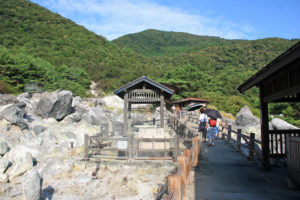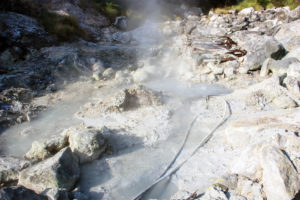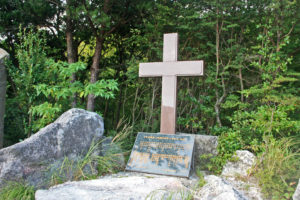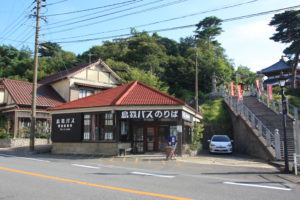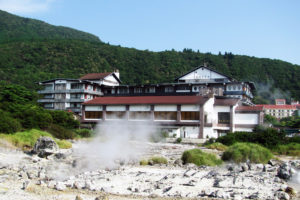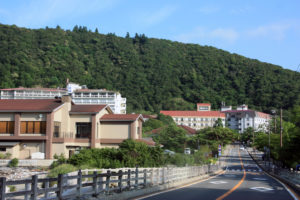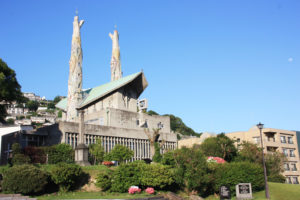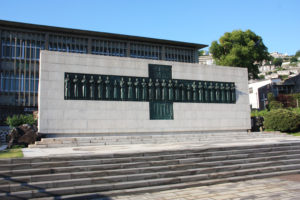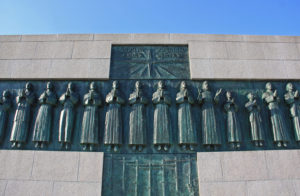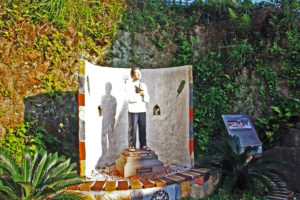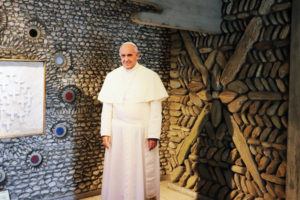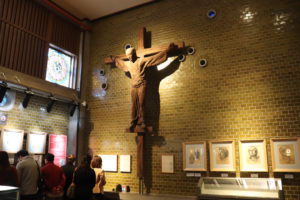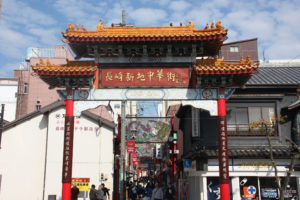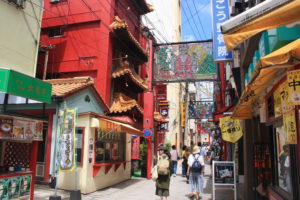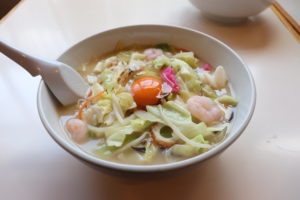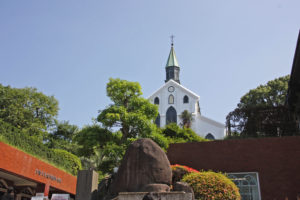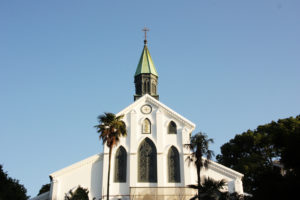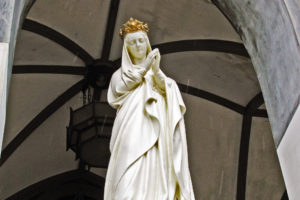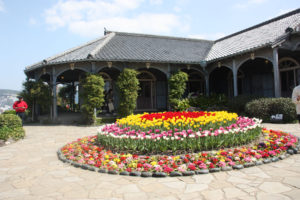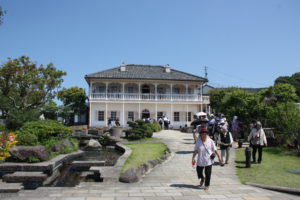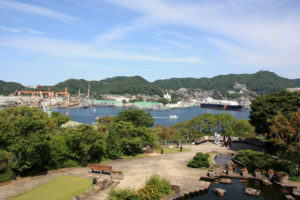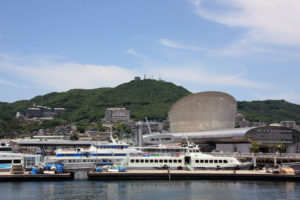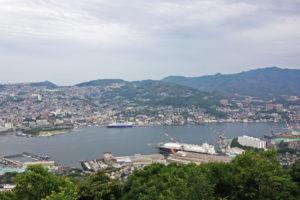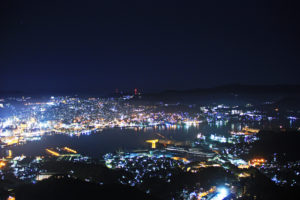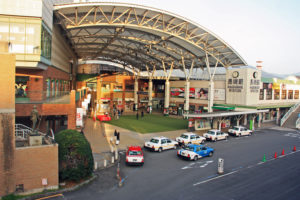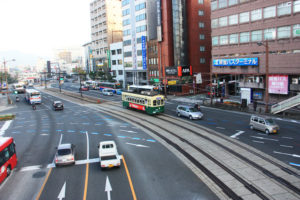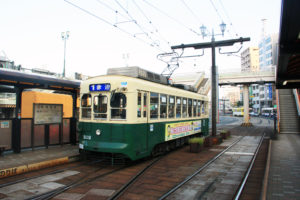Day 3 Shimabara & Amakusa
Nagasaki Pilgrimage 6 days tour
Shimabara is located in the foot of Mount Unzen and facing Ariake Sea, and those geographical
conditions and mild climate create natural scenic beauty in the east and Mount Unzen including Mount Fugen. The region offers various enjoyable things such as Nature, Onsen,
Castle town of Shimabara-city, and Christian Pilgrimage sites.
Itinerary
Exploring Shimabara
Samurai Houses & Samurai street
Lunch at Shimabara, local delicacy food, Guzoni
Transfer to Minami Shimabara
Transfer to Amakusa from Kuchinotsu
Stay in Amakusa
Where to visit
The castle was built in 1625 by the feudal load Matsukura Shigemasa, who was regarded as
a master of Castle building. The castle, which took 7 years to complete, is also known as
“Moritake Castle”. It was an almost rectangular flatland castle built in the Renkaku-style.
Samurai Houses & Samurai street
Samurai was a term for the military nobility in pre-industrial Japan. The Samurai houses in
Shimabara along the old Samurai street nearby Shimabara Castle were built in 18th century.
Lunch at Shimabara
local delicacy food, Guzoni
Guzoni is said to created during the Shimabara Rebellion of 1637. When Cristians were fought under
the leader ship of Amakusa Shiro, they brought various ingredients such as rice cake, fishes and
vegetables, and made a stew. This is the origin of Guzoni.
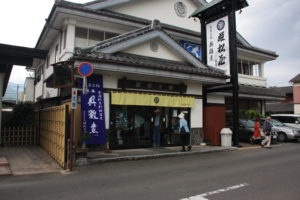 |
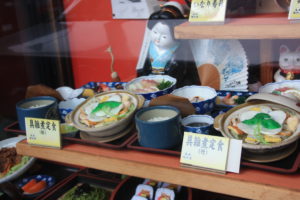 |
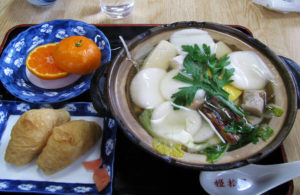 |
The Christian pilgrimage site, registered on UNESCO’s World Heritage Site as Hidden Christian Sites
in the Nagasaki Region. The battle field of Shimabara Rebellion which was a peasant uprising agaist
bakufu’s persecution of Christians under the leadership of Amakusa Shiro in 1637.
Transfer to Amakusa (Oniike) , from Kuchinotsu (Minami-Shimabara-city)
Shimatetsu Ferry : operated by Shinabara Rail Way, 30 minutes ride.
|
Kuchinotsu port |
Kuchinotsu |
|
Shimabara
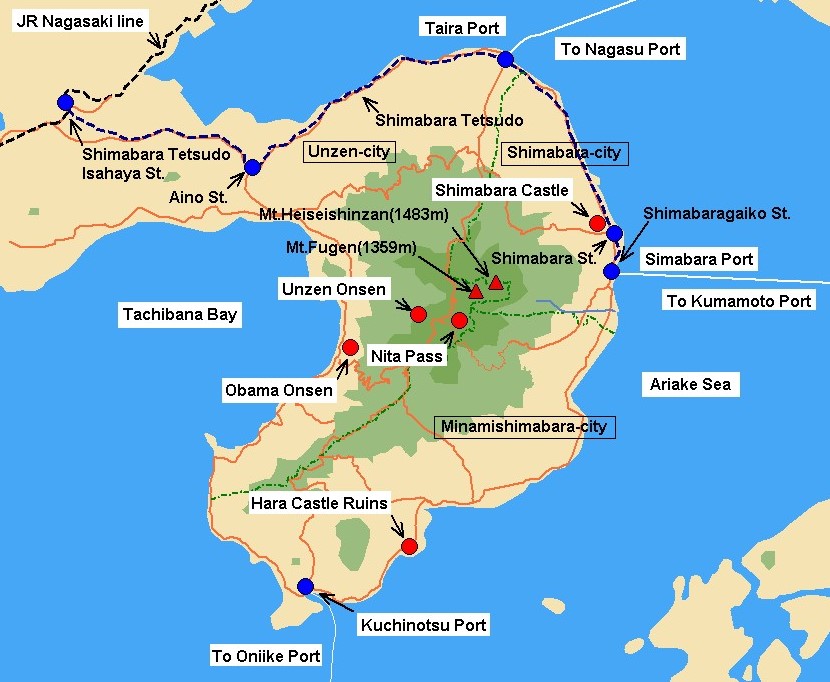
Amakusa
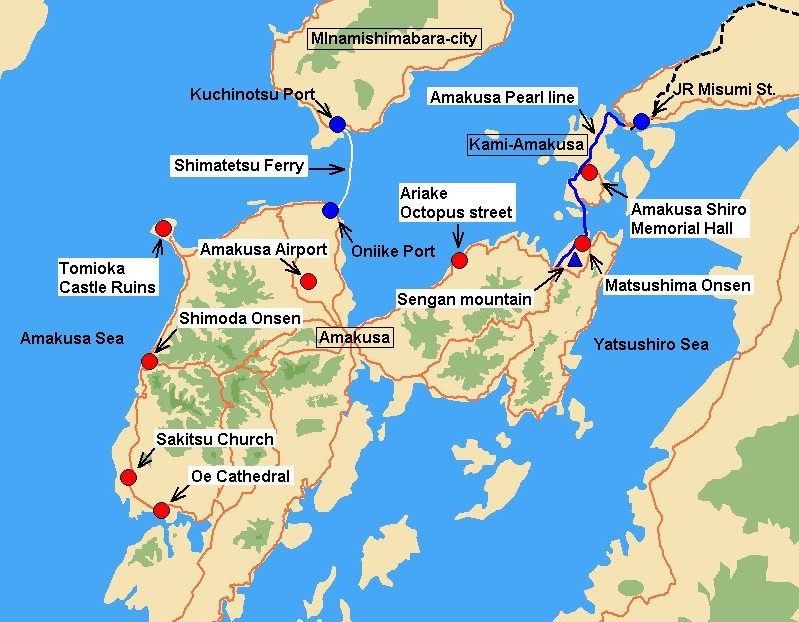
Day 3 Shimabara & Amakusa
Nagasaki Pilgrimage 6 days tour
Itinerary
Exploring Shimabara
Samurai Houses & Samurai street
Lunch at Shimabara, local delicacy food, Guzoni
Transfer to Minami Shimabara
Transfer to Amakusa from Kuchinotsu
Stay in Amakusa
Where to visit
The castle was built in 1625 by the feudal load Matsukura Shigemasa, who was regarded as
a master of Castle building. The castle, which took 7 years to complete, is also known as
“Moritake Castle”. It was an almost rectangular flatland castle built in the Renkaku-style.
Samurai Houses & Samurai street
Samurai was a term for the military nobility in pre-industrial Japan. The Samurai houses in
Shimabara along the old Samurai street nearby Shimabara Castle were built in 18th century.
Lunch at Shimabara
local delicacy food, Guzoni
Guzoni is said to created during the Shimabara Rebellion of 1637. When Cristians were fought under
the leader ship of Amakusa Shiro, they brought various ingredients such as rice cake, fishes and
vegetables, and made a stew. This is the origin of Guzoni.
 |
 |
 |
The Christian pilgrimage site, registered on UNESCO’s World Heritage Site as Hidden Christian Sites
in the Nagasaki Region. The battle field of Shimabara Rebellion which was a peasant uprising agaist
bakufu’s persecution of Christians under the leadership of Amakusa Shiro in 1637.
Transfer to Amakusa (Oniike) , from Kuchinotsu (Minami-Shimabara-city)
Shimatetsu Ferry : operated by Shinabara Rail Way, 30 minutes ride.
|
Kuchinotsu port |
Kuchinotsu |
To Amakusa |
Shimabara

Amakusa

Day 6 Hirado
Nagasaki Pilgrimage 6 days tour
The island had been an important port for trade with Korea and China since earlier
times, with the rights to foreign trade held by the local Matsuura clan. William Adams
was instrumental in establishing the British trading post and he is buried on the island.
The British stayed only ten years before leaving after bitter feuding with the Dutch, who
were moved to Dejima in Nagasaki by the Japanese authorities in 1641.
Itinerary
Depart Hotel
Exploring Hirado
Nakae no Shima
Transfer to Fukuoka
Arrive at Hotel in Fukuoka
Where to visit
Stands on a hill guarding Hirado Port and the Hirado Strait, which used to be part of an important
trade route between Japan and the Asian mainland. The original fortress was built in 1599 by the
local Matsura Lord; however, he destroyed the structure after fighting the Tokugawa on the losing
side of the Battle of Sekigahara as a gesture of loyalty to the victor. The Matsura Clan continued
ruling Hirado for the next two and a half centuries.
Nakae no Shima / UNESCO World Heritage
Located two kilometers off the coast of Hirado Island, Nakae no Shima is a small, uninhabited island
where religious leaders were executed during the persecution of Christians. The island is considered
sacred, and water collected there is used for baptism.
|
|
|
|
Kasuga Village / UNESCO World Heritage
This idyllic, remote village was refuge to a small community of Hidden Christians who practiced here
for centuries, far from the prying eyes of the government. After the ban on Christianity was lifted, the
local villagers decided to continue practicing their own unique brand of the religion rather than rejoin
the Catholic Church. As a result, churches were not erected in the village, and the religion remains
outwardly invisible.
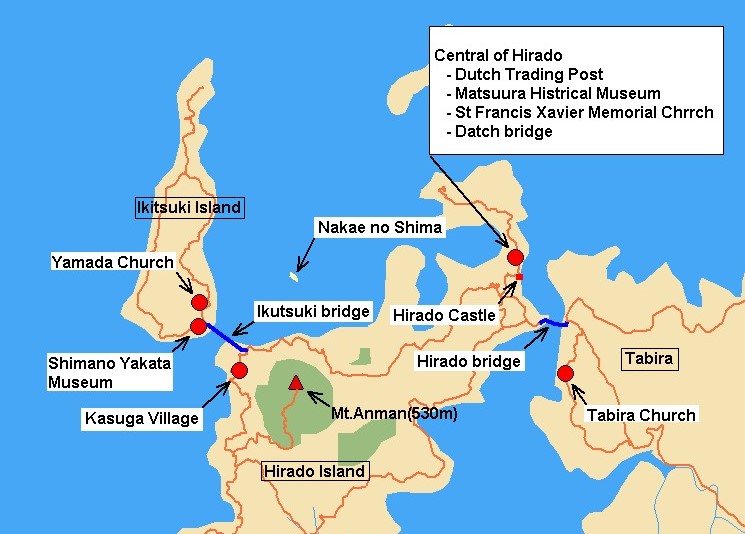
Day 5 Hirado
Nagasaki Pilgrimage 6 days tour
Hirado off the North West coast of Nagasaki-prefecture is a beautiful and historic location
full of interesting museums, Christian churches, white sandy beaches and an imposing
castle. Portuguese ships first landed in Hirado’s superb natural harbor in 1549 and
St. Francis Xavier is known to have visited in 1550. In the 1580s, the Portuguese established
a trading station, followed soon by the Dutch and the British.
Itinerary
Depart Kumamoto
Transfer to Hirado
Visit Tabira Church
Lunch at Hirado, local delicacy sea food
Exploring Hirado
St Francis Xavier Memorial Church
Stay at Hirado
Where to visit
The church was designed by Tetsukawa Yosuke, a famous architect of various churches
in Nagasaki-prefecture, and built between December 1915 and October 1917. It is one
of the latest brick churches in the prefecture of Nagasaki. Tetsukawa Yosuke has called
this one of his best works.
Lunch at Hirado
local delicacy sea food
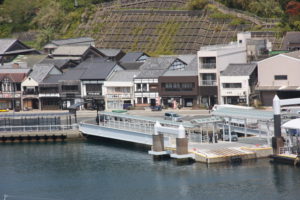 |
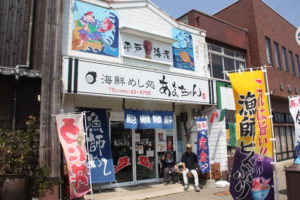 |
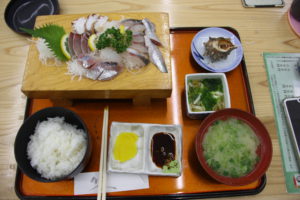 |
The museum stores and displays the historical collection of the Matsura family who ruled over the
northern area of Nagasaki prefecture since the 13th century. The museum is housed in the former
private residence of the Matsura family, the grand Tsurugamine Mansion, built in 1893. Hirado has
a long history of overseas exchange due to its geographical location.
St. Francis Xavier Memorial Church
This church is a catholic church in Hirado, Nagasaki. Hirado is a place where Francis Xavier visited
3 times in Japan to spread Christianity, and even during the Kinkyo Ordinance of the Edo Period
that prohibited religions, Christianity was very widespread. For that reason when the ordinance was
lifted this church was constructed, and the image of Francis Xavier was put on the side.
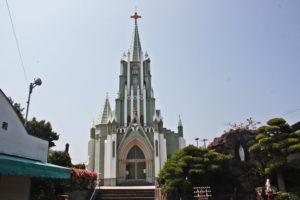 |
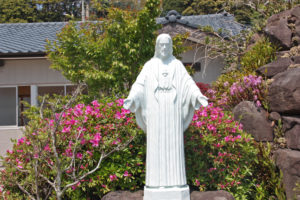 |
Set up in Hirado in 1609 as the base of operations of the Dutch East India Company in Japan. The
building seen today is a warehouse which was originally constructed here in 1639 as part of the
trading post, but torn down just three years later after the Dutch had been relocated to Dejima Island
in the port of Nagasaki.

Day 4 Amakusa & Kumamoto
Nagasaki Pilgrimage 6 days tour
Amakusa, is located in a southern part of Kumamoto-city, and consists of Shimo-jima,
Kami-jima and many other islands varied in size, which belong to Unzen-Amakusa
National Park along with Unzen.
Amakusa has the Christinan Pilgrimage sites where Christian faith
continued even during the ban on Christianity, Sakitsu Village has been registered on
UNESCO World Heritage / Hidden Christian Sites.
Itinerary
8:00 Depart Hotel
Visiting Hidden Christian sites in Amakusa
Travel Amakusa Gokyo / Pearl line
Transfer to Kumamoto
Exploring Kumamoto
Stay in Kumamoto
Where to visit
The oldest Catholic Church in Amakusa and was one of the first churches built right after the ban
on Christianity was lifted. The Romanesque-style architecture and the chalky white structure was
rebuilt in 1933 by a French missionary priest named Father Garnier using his own money and
contributions from local Christians living in the area.
Sakitsu Village / UNESCO World Heritage
A Gothic-looking church is located on a cove of a fishing village. In 1934, a French priest Augustin
Halbout MEP purchased the premises of the former village headman and built a wooden and
concrete finished church, with Tetsukawa Yosuke’s design and construction. He placed the altar
at the very site where fumie or a test to ensure non-allegiance to Christianity had been conducted.
The theme Museum shows History of Christianity in Amakusa and Shimabara Rebellion in
Harajo Castle Ruins which was a peasant uprising agaist bakufu’s persecution of Christians
under the leadership of Amakusa Shiro in 1637.
Josaien is located in Sakurano-baba, at the foot of Kumamoto Castle, one of Japan’s three
major castles. It is a popular tourist attraction designed to enhance the appeal of the old castle
town and convey to visitors the food, history and cultural traditions of the region from Kumamoto
Castle, a symbol of the Kumamoto-city.
The Castle is one of the three great castles and one of the 100 best places in Japan to view cherry
blossoms. Due to the Earthquakes in 2016, several of the castle’s shacihoko ornaments were
destroyed, and a large number of kawara tiles also fell from the roof. Now the restoration activities
are being performed as fast as possible. Now, the Kumamoto Castle can be seen from the outside
of the moats surrounding the castle.
Amakusa

Kumamoto
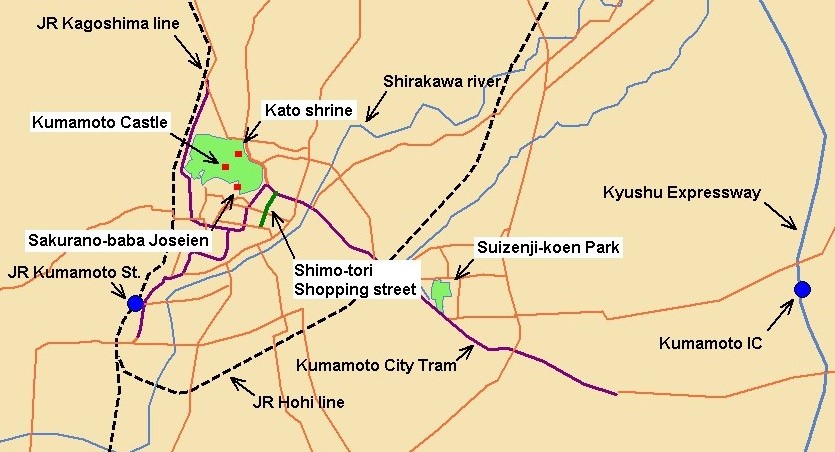
Day 2 Nagasaki & Unzen
Nagasaki is now appealing for World Peace, Disastrous War must not be repeated.
Unzen is Located in the centre of Shimabara peninsula, at the southwest part of
Mount Unzen with an altitude of 700m. It is started receiving foreign tourists around the
year 1900 when Kaempfer and Siebold introduced the city to Europe and China.
Option
The Japan’s longest foot bath in Obama
Established in 1955 near the Ground Zero where the Atomic Bomb was droppedat 11:02 am
on Aug. 09, 1945. Peace Memorial Ceremony is held in front of the statue on August 9 every
year and the Mayor of Nagasaki makes the “Nagasaki peace declaration” for the whole world.
The museum exhibits a number of photograph that depict the devastation caused by atomic
bomb showing the lead-up to this tragic day, the history of the development of nuclear arms
and our desire for peace.
The plutonium atomic bomb exploded about 500m over the central monument at 11:02 a.m.on
August 9, 1945. The most part of Nagasaki was destroyed, and a tremendous number of lives
were lost. And about 70,000 of Nagasaki’s 240,000 residents died instantly, and up to 60,000
were injured.
Completed in 1955, ten years after the atomic bombing. The 9.7 meter high statue sitting on
a 4 meter tall pedestal, made by renown sculptor Kitamura Seibo. The raised arm points to the
threat of nuclear weapons and the out-stretched arm symbolizes peace.
Lunch at Obama Onsen
Obama Chanpon
It is a local cuisine in Obama Onsen resort, made of noodles, seafood, and vegetables. The feature
of the restaurant in Obama Onsen serving everything from any Japanese style including Susi and
Chanpon. Shrimp are found in abundance along the beaches near the Onsen, and a special soup
is made from them.
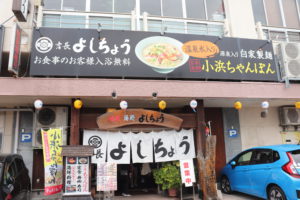 |
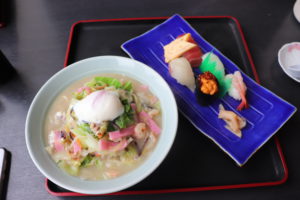 |
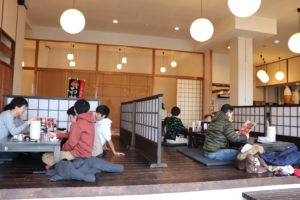 |
Unzen is a beautiful mountain and Onsen resort, and was the first area to be designated as
a National Park in Japan. At any time of the year the natural scenery of Nita-toge Pass in Unzen
is magnificent. Azaleas, green leaves, brilliant autumnal tints of maples and silver frost
represent each season of the year.
Means Hell, is the number one attraction of Unzen with a peculiar smell of sulfur emitted from
the springs, and with white smoke rising from the ground over a wide area. Unfortunately, this
was once put into reality nearly 350 years ago during the time of religious persecution in Japan.
30 Japanese Christians, failing to renounce their faith met their death here in the scalding spring
of Jigoku.
Option
The Japan’s longest foot bath in Obama
Called “Hot foot 105” The length of foot bath is 105m which is same number of the hot spring
source temperature of 105 degree Celsius.
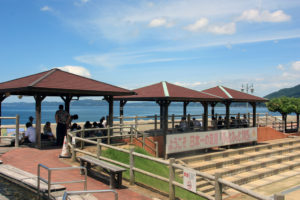 |
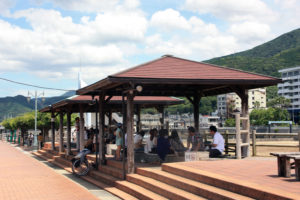 |
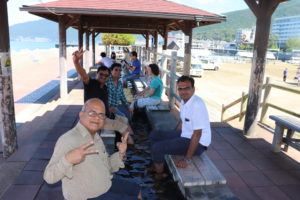 |
Local specialities, Souvenir shop
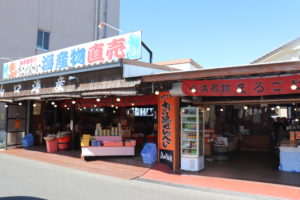 |
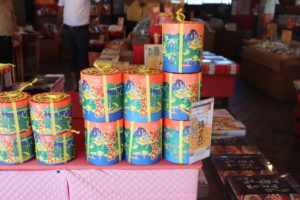 |
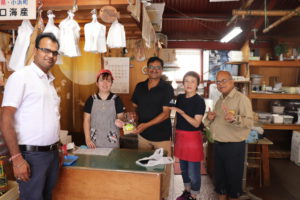 |
Stay
There are 17 Hotels and Japanese style inns around Unzen Jigoku. From every hotel, beautiful
scenery which changes by season can be enjoyed.
Nagasaki Peace Park
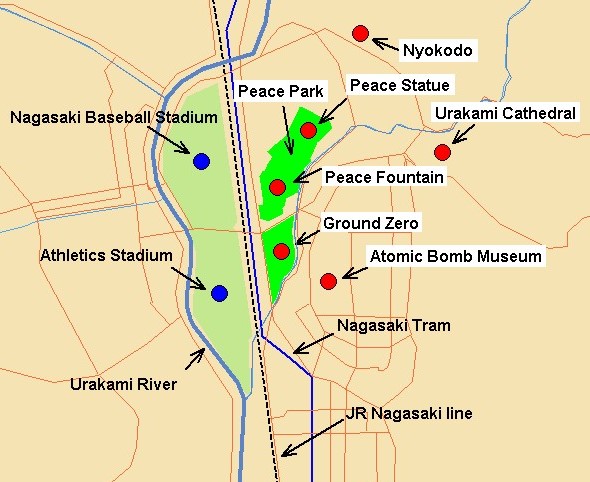
Unzen

Day 1 Sotome & Nagasaki
Nagasaki Pilgrimage 6 days tour
Sotome is a rural, coastal area on the peninsula north of central Nagasaki. During the ban on
Christianity, Sotome was home to communities of “Hidden Christians”, many of whom
emigrated there from other parts of Nagasaki as the remote region allowed them to practice
their religion in secret.
Nagasaki is a sacred place of Christianity where Pope and Saint Mother Teresa officially visited.
Itinerary
Depart Fukuoka-city
Transfer to Nagasaki-city
Lunch at Nagasaki Wharf or China Town
Martyrdom of the 26 Saints of Japan
Stay at Nagasaki–city
Where to visit
On an elevation commanding a view over the Sea of Goto, Father Marc Marie de Rotz established
a church at his own expense 1882. The building was extended and renovated again and again.
A statue of Mary that he ordered from France is standing in the bell tower.
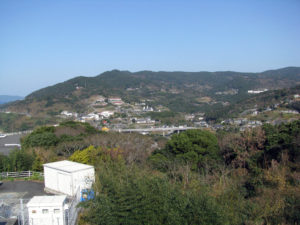 |
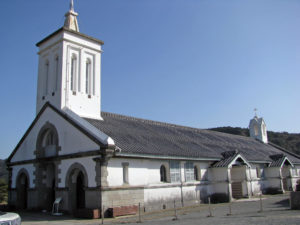 |
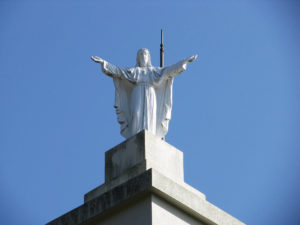 |
I want to save people in the Sotome from poor life. Former Shitsu Aid Centeris indispensable in
talking about the history and culture of the region.
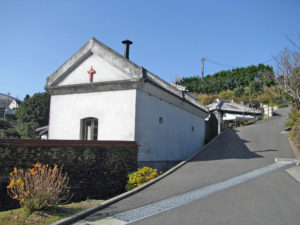 |
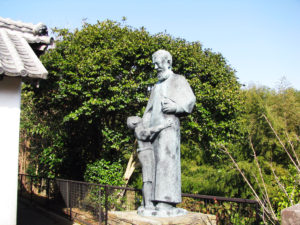 |
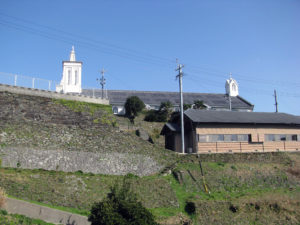 |
The setting of Endo Shusaku’s novel Silence. Sotome is blessed with a unique history and
culture of Christianity. In particular, the area in which the Endo Shusaku Literary Museum
stands is known as the site of a Christian village, one of Endo’s most notable work, Silence.
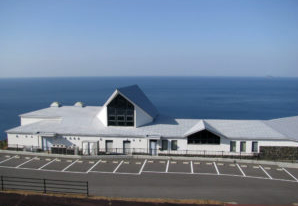 |
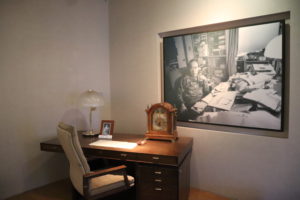 |
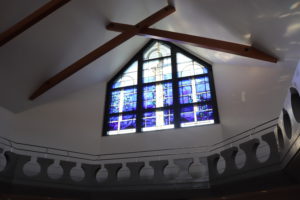 |
Nagasaki
Martyrdom of the 26 Saints of Japan
were a group of Catholics who were executed by crucifixion on February 5, 1597.Their martyrdom
is especially significant in the history of the Catholic Church in Japan. In 1637, St. Lorenzo Luiz
from Philippines martyred here at Nishizaka hill.
The museum behind the Monument is devoted to the memory of the martyrs and to Christianity in
Japan in general. Its interior is reminiscent of a church with stained-glass windows, making for
atmospheric viewing of the exhibits. On display are artifacts related to Christianity in Japan,
including old documents, statues and jewelry.
Lunch at Nagaaski Wharf or China Town
Elegant international & domestic tourist harbour. Made up of around 20 unique shops and
restaurants lined up at the water front, offering various choices such Japanese, Western,
and Italian cuisine, to beauty salons, outdoor shops and more.
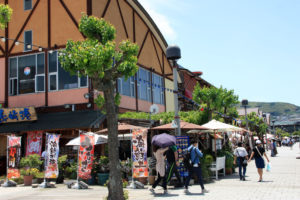 |
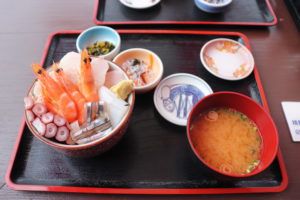 |
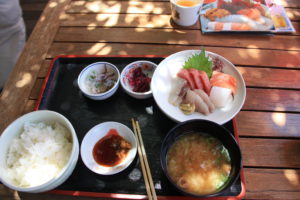 |
Nagasaki China town at shinchi is one of the big three china town in Japan. There are about 50
Chinese restaurants and many Chinese sundries shops in there.
Oura Cathedral / UNESCO World Heritage
The Cathedral is one of the significant Christian Pilgrimage site in Japan. Established 1865, this
church is officially known as “Oura Cathedral, the Church of 26 Martyrs.” It was built by the French
priest Bernard Petitjean of Fier who had been dispatched by the Foreign Missionary Church of
Paris to dedicate prayers to the 26 saints martyred on Nishizaka hill.
Glover Garden / UNESCO World Heritage
The garden takes its name from Thomas Glover, his arms-importing operations played an important
part in the Meiji Restoration, he built the first train line in Japan and he even helped establish the
first modern Mitsubishi ship yard.
It is a 333 meter high mountain in close distance to JR Nagasaki Station. The summit can
be reached by ropeway or car and offers great views over the city. And also, the magnificent
night views from Mount Inasa are ranked among Japan’s three best night views.
Stay
Nagasaki
Most Hotels are located close to the main street and walking distance from Nagasaki tram
stations. And you can find many restaurants around the Hotels.
|
|
|
|
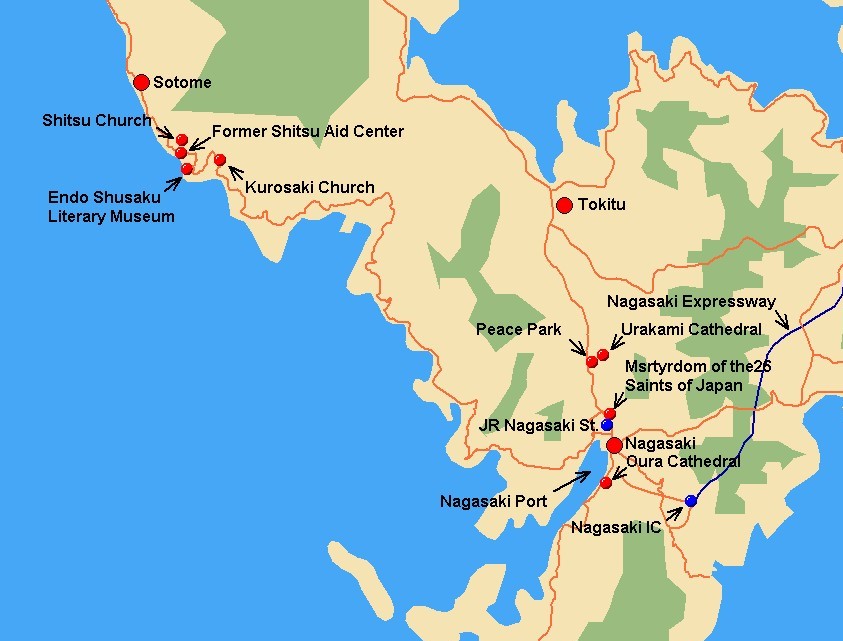
Day 3 Shimabara
Nagasaki Pilgrimage 3 days tour
Shimabara is located in the foot of Mount Unzen and facing Ariake Sea, and those geographical
conditions and mild climate create natural scenic beauty in the east and Mount Unzen including Mount Fugen. The region offers various enjoyable things such as Nature, Onsen,
Castle town of Shimabara-city, and Christian Pilgrimage sites.
Itinerary
Transfer to Minami Shimabara
Lunch at Shimabara, local cuisine Guzoni
Transfer to Fukuoka-city
Arriva at Fukuoka-city
Where to visit
The Christian pilgrimage site, registered on UNESCO’s World Heritage Site as Hidden Christian
Sites in the Nagasaki Region. The battle field of Shimabara Rebellion which was a peasant
uprising against bakufu’s persecution of Christians under the leadership of Amakusa Shiro in 1637.
The castle was built in 1625 by the feudal load Matsukura Shigemasa, who was regarded as
a master of Castle building. The castle, which took 7 years to complete, is also known as
“Moritake Castle”. It was an almost rectangular flatland castle built in the Renkaku-style.
Samurai Houses & Samurai street
Samurai was a term for the military nobility in pre-industrial Japan. The Samurai houses in
Shimabara along the old Samurai street nearby Shimabara Castle were built in 18th century.
Lunch at Shimabara
local delicacy food, Guzoni
Guzoni is said to created during the Shimabara Rebellion of 1637. When Cristians were fought
under the leader ship of Amakusa Shiro, they brought various ingredients such as rice cake, fishes
and vegetables, and made a stew. This is the origin of Guzoni.
 |
 |
 |

Day 2 Nagasaki & Unzen
Nagasaki is now appealing for World Peace, Disastrous War must not be repeated.
Unzen is Located in the centre of Shimabara peninsula, at the southwest part of
Mount Unzen with an altitude of 700m. It is started receiving foreign tourists around the
year 1900 when Kaempfer and Siebold introduced the city to Europe and China.
Option
The Japan’s longest foot bath in Obama
Established in 1955 near the Ground Zero where the Atomic Bomb was droppedat 11:02 am
on Aug. 09, 1945. Peace Memorial Ceremony is held in front of the statue on August 9 every
year and the Mayor of Nagasaki makes the “Nagasaki peace declaration” for the whole world.
The museum exhibits a number of photograph that depict the devastation caused by atomic
bomb showing the lead-up to this tragic day, the history of the development of nuclear arms
and our desire for peace.
The plutonium atomic bomb exploded about 500m over the central monument at 11:02 a.m.on
August 9, 1945. The most part of Nagasaki was destroyed, and a tremendous number of lives
were lost. And about 70,000 of Nagasaki’s 240,000 residents died instantly, and up to 60,000
were injured.
Completed in 1955, ten years after the atomic bombing. The 9.7 meter high statue sitting on
a 4 meter tall pedestal, made by renown sculptor Kitamura Seibo. The raised arm points to the
threat of nuclear weapons and the out-stretched arm symbolizes peace.
Lunch at Obama Onsen
Obama Chanpon
It is a local cuisine in Obama Onsen resort, made of noodles, seafood, and vegetables. The feature
of the restaurant in Obama Onsen serving everything from any Japanese style including Susi and
Chanpon. Shrimp are found in abundance along the beaches near the Onsen, and a special soup
is made from them.
 |
 |
 |
Unzen is a beautiful mountain and Onsen resort, and was the first area to be designated as
a National Park in Japan. At any time of the year the natural scenery of Nita-toge Pass in Unzen
is magnificent. Azaleas, green leaves, brilliant autumnal tints of maples and silver frost
represent each season of the year.
Means Hell, is the number one attraction of Unzen with a peculiar smell of sulfur emitted from
the springs, and with white smoke rising from the ground over a wide area. Unfortunately, this
was once put into reality nearly 350 years ago during the time of religious persecution in Japan.
30 Japanese Christians, failing to renounce their faith met their death here in the scalding spring
of Jigoku.
Option
The Japan’s longest foot bath in Obama
Called “Hot foot 105” The length of foot bath is 105m which is same number of the hot spring
source temperature of 105 degree Celsius.
 |
 |
 |
Local specialities, Souvenir shop
 |
 |
 |
Stay
There are 17 Hotels and Japanese style inns around Unzen Jigoku. From every hotel, beautiful
scenery which changes by season can be enjoyed.
Nagasaki Peace Park

Unzen

Day 1 Sotome & Nagasaki
Nagasaki Pilgrimage 3 days tour
Sotome is a rural, coastal area on the peninsula north of central Nagasaki. During the ban on
Christianity, Sotome was home to communities of “Hidden Christians”, many of whom
emigrated there from other parts of Nagasaki as the remote region allowed them to practice
their religion in secret.
Nagasaki is a sacred place of Christianity where Pope and Saint Mother Teresa officially visited.
Itinerary
Depart Fukuoka-city
Transfer to Nagasaki-city
Lunch at Nagasaki Wharf or China Town
Martyrdom of the 26 Saints of Japan
Stay at Nagasaki–city
Where to visit
On an elevation commanding a view over the Sea of Goto, Father Marc Marie de Rotz established
a church at his own expense 1882. The building was extended and renovated again and again.
A statue of Mary that he ordered from France is standing in the bell tower.
 |
 |
 |
I want to save people in the Sotome from poor life. Former Shitsu Aid Centeris indispensable in
talking about the history and culture of the region.
 |
 |
 |
The setting of Endo Shusaku’s novel Silence. Sotome is blessed with a unique history and
culture of Christianity. In particular, the area in which the Endo Shusaku Literary Museum
stands is known as the site of a Christian village, one of Endo’s most notable work, Silence.
 |
 |
 |
Nagasaki
Martyrdom of the 26 Saints of Japan
were a group of Catholics who were executed by crucifixion on February 5, 1597.Their martyrdom
is especially significant in the history of the Catholic Church in Japan. In 1637, St. Lorenzo Luiz
from Philippines martyred here at Nishizaka hill.
The museum behind the Monument is devoted to the memory of the martyrs and to Christianity in
Japan in general. Its interior is reminiscent of a church with stained-glass windows, making for
atmospheric viewing of the exhibits. On display are artifacts related to Christianity in Japan,
including old documents, statues and jewelry.
Lunch at Nagaaski Wharf or China Town
Elegant international & domestic tourist harbour. Made up of around 20 unique shops and
restaurants lined up at the water front, offering various choices such Japanese, Western,
and Italian cuisine, to beauty salons, outdoor shops and more.
 |
 |
 |
Nagasaki China town at shinchi is one of the big three china town in Japan. There are about 50
Chinese restaurants and many Chinese sundries shops in there.
Oura Cathedral / UNESCO World Heritage
The Cathedral is one of the significant Christian Pilgrimage site in Japan. Established 1865, this
church is officially known as “Oura Cathedral, the Church of 26 Martyrs.” It was built by the French
priest Bernard Petitjean of Fier who had been dispatched by the Foreign Missionary Church of
Paris to dedicate prayers to the 26 saints martyred on Nishizaka hill.
Glover Garden / UNESCO World Heritage
The garden takes its name from Thomas Glover, his arms-importing operations played an important
part in the Meiji Restoration, he built the first train line in Japan and he even helped establish the
first modern Mitsubishi ship yard.
It is a 333 meter high mountain in close distance to JR Nagasaki Station. The summit can
be reached by ropeway or car and offers great views over the city. And also, the magnificent
night views from Mount Inasa are ranked among Japan’s three best night views.
Stay
Nagasaki
Most Hotels are located close to the main street and walking distance from Nagasaki tram
stations. And you can find many restaurants around the Hotels.
|
|
|
|


